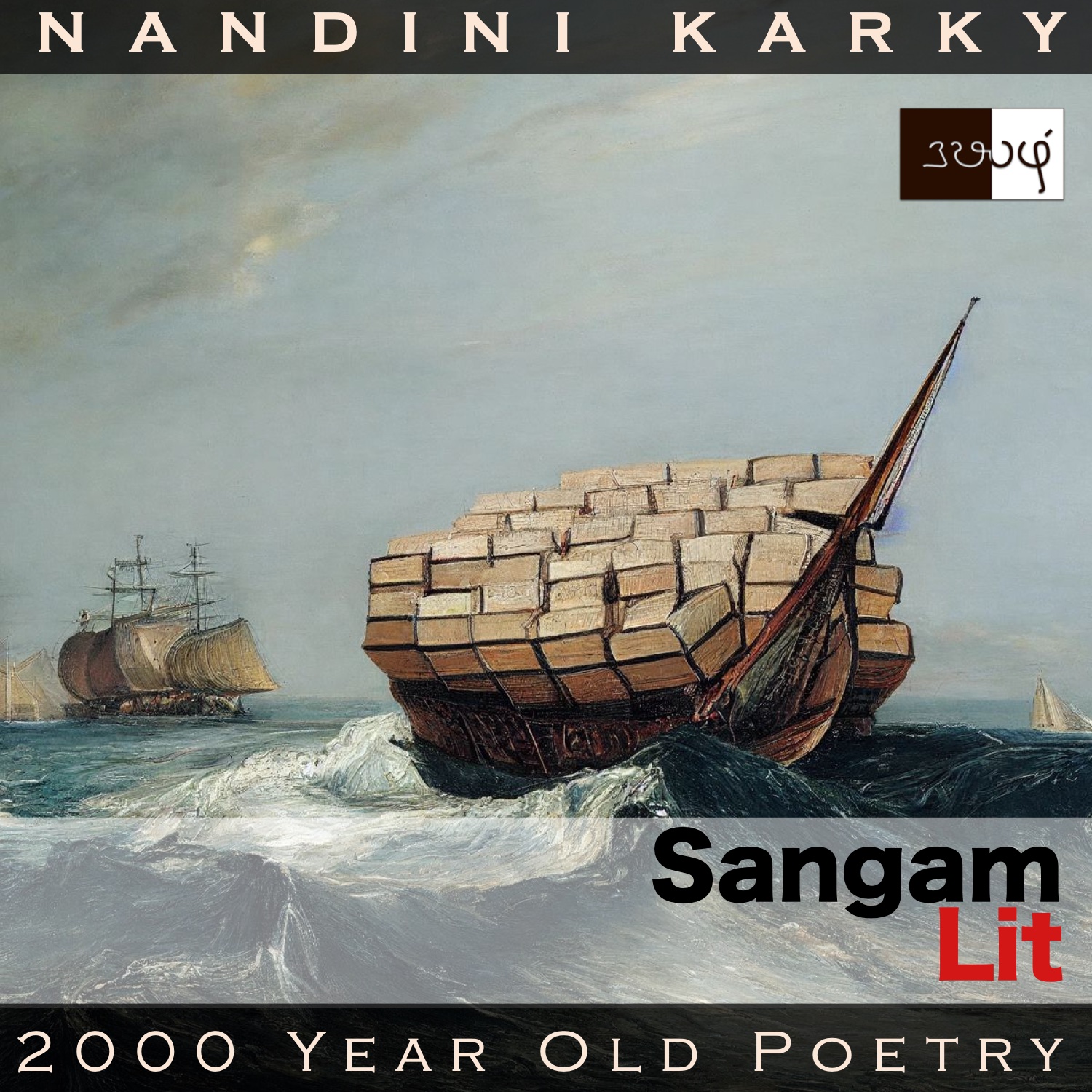Podcast: Play in new window | Download
Subscribe: Apple Podcasts | Spotify | Amazon Music | Android | iHeartRadio | Email | TuneIn | RSS | More

In this episode, we perceive the trade and prosperity of an ancient nation, as depicted in Sangam Literary work, Puranaanooru 30, penned about the Chozha king Nalankilli by the poet Uraiyoor Muthukannan Saathanaar. The verse is set in the category of ‘Paadaan Thinai’ or ‘king’s praise’ and talks about the nature of this Chozha king.
செஞ் ஞாயிற்றுச் செலவும்,
அஞ் ஞாயிற்றுப் பரிப்பும்,
பரிப்புச் சூழ்ந்த மண்டிலமும்,
வளி திரிதரு திசையும்,
வறிது நிலைஇய காயமும், என்று இவை
சென்று அளந்து அறிந்தோர் போல, என்றும்
இனைத்து என்போரும் உளரே; அனைத்தும்
அறி அறிவு ஆகாச் செறிவினை ஆகி,
களிறு கவுள் அடுத்த எறிகல் போல
ஒளித்த துப்பினைஆதலின், வெளிப்பட
யாங்ஙனம் பாடுவர், புலவர்? கூம்பொடு
மீப் பாய் களையாது மிசைப் பரம் தோண்டாது
புகாஅர்ப் புகுந்த பெருங் கலம் தகாஅர்
இடைப் புலப் பெரு வழிச் சொரியும்
கடல் பல் தாரத்த நாடு கிழவோயே!
Another song celebrating the Chozha king Nalankilli by the same poet, and this time, we are shown a glimpse of an interesting personality trait of this monarch. The poet’s words can be translated as follows:
“When you consider the path of the crimson sun, its movement, the circular sphere it covers through its movement, directions of wind currents and the sky that seems to stand without any support, there are those who have gone, studied and understood each of these elements and can describe what they are indeed. But even those who know so much of the world would not be able to understand you, as you hide your strength like how an elephant holds a throwing stone in its cheek. If you are so, how can poets sing your praises? Without changing the sails and without reducing the load atop, when the huge ship enters the estuary, unable to bear the weight, all along its path, the crew shed many objects of the plentiful cargo into the seas that see much trade in your domain, O king!”
Time to delve into the nuances of the poet’s words. He starts by talking about people, who study the sun, its movements, about the wind and sky. That sounds like a description of researchers in astronomy and anemology, the top scientists of NASA and ISRO, to put in today’s context. We should take a moment to understand that a contemporary poet is not talking about these modern scientific topics but one who lived more than two thousand years ago. Note how the poet gives evidence to Sangam people not merely celebrating the sun and the wind as gods and going about their job but that they are curious in a rational way about the world around them and is a clear demonstration of the scientific mindset of the people of this era.
Returning to the verse, the poet has spoken about those researchers saying that there are people who study these aspects and they can say clearly what is what but even they would not be able to understand the depths of this king, why because he hides his abilities like how an elephant would hold a stone secretly in the folds of its cheek. Then, in a lamenting voice, he asks the king how is one supposed to sing about him if he is so modest in his nature? Then, from the king, he turns to an image that is open and explanatory – One, where ships loaded to the full are entering the estuary of the king’s harbour and without lowering the sails, the crew can be seen dropping some of the cargo carelessly into the sea. Such is the king’s domain, the poet concludes. Since the king is not one to show anything, the poet turns to the aid of a scene in the king’s land to sing about the wealth of his nation. They are so rich that they care not if cargo is carelessly thrown into the sea, is the implication of this poet’s words.
Interesting to get to know this modest king and also amusing to see the poet lamenting about that aspect of the king and indirectly praising his prowess! And, that switch-over to a scene in the seas near the king’s domain talks about how trade and ships were a taken-for-granted thing for the ancient Tamils. Even thousands of years ago, they seem to have ruled the seas and reached out to far-off lands. When India is moving in the direction of indigenising its Navy, this is something that our ship builders could find inspiration from. Have we lost this ancient knowledge that was handed down generation after generation in those times, owing to the modernisation of this Tamil land or is it somewhere out there, hiding like the stone in the elephant’s cheek, waiting to be seen and celebrated?




Share your thoughts...